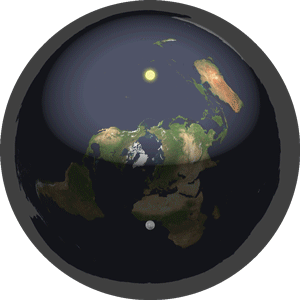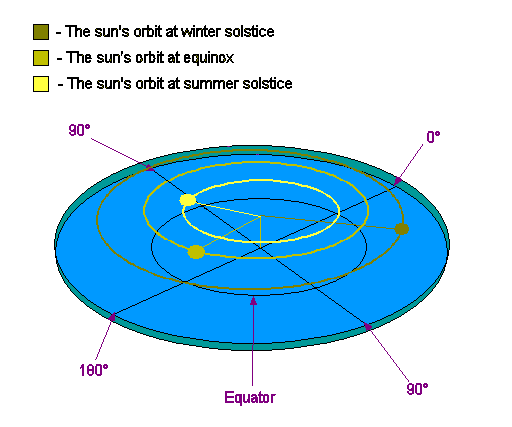Answer
The ancient Greek mathematician Eratosthenes measured what he erroneously thought was the circumference of the ball earth.
Using a conceptually genius approach, he calculated the circumference of a spherical earth by measuring a shadow cast in his own city against the fact that no shadow was cast at the same time of day at a well located in a nearby city that was a known distance away. Using these variables, he calculated the circumference of the ball earth:

But his experiment erroneously assumed that the sun is far away and that it emits rays of light in a parallel fashion. However, if the sun is smaller and much closer to earth's surface, when directly overhead it would cast rays perpendicular to the ground, producing no shadow. For an object a short distance away it would cast light at varying angles, causing a shadow to be cast. This shows that while Eratosthenes exhibited exemplary critical thinking and empirical observation, he failed because he made one major problematic assumption: he assumed that the sun is large and farther from Earth. On a Flat Earth with a small local sun, the same effects would occur as on a ball earth.
If you are interested in how Eratosthenes actually performed this experiment then check out this (spherist) video by Carl Sagan...
Eratosthenes shows us that all measurements of physical reality are strongly impacted by the assumptions we start out with. That being said, what are the surface dimensions of the Flat Earth?
Fig 1
The surface area of the spherical earth, 196.9 million miles squared, serves as an approximate model for determining the entire surface area of the Flat Earth. Like Eratosthenes, some spherist measurements are usable, even though spherists themselves based the data on incorrect assumptions. An equatorial measure of the circumference (Fig 1) carves out a portion of the Flat Earth that is about half its total surface area, or 98.45 million miles squared. Multiplying the equatorial circumference by a value slightly larger than double (say, 2.2) gives us a total circumference as bounded by the ice ring of 98.45miles x 2.2 = 54,782.2mile (Fig 2).
Fig 2
From here, it is easy to find the diameter of the Flat Earth (As Bound by The Ice Ring) using the equation for the diameter of a circle where the circumference is known: C=兀(d). Substituting our values we get: 54,782.2mi = (3.14)(d). Performing some simple math (divide both sides by 3.14) yields a diameter of: 17,446.6mi (Fig 3). The ice ring itself extends outward to an known distance of many thousands of miles. We will need to wait for the day when real research can be conducted to fully understand the full surface area of the Flat Earth...
Fig 3
As these numbers show, the diameter of the Flat Earth (as bound by the ice ring) is significantly larger than the supposed diameter of the ball earth. Keep in mind that these numbers represent educated estimates. Also, the picture used here of the Flat Earth shows a distorted view of S America, Africa, and Australia. These landmasses are not so large as the picture implies. Pictures produced by NASA also tend to be distorted as well as photoshopped. The above picture is only meant to serve as a visual approximation...












